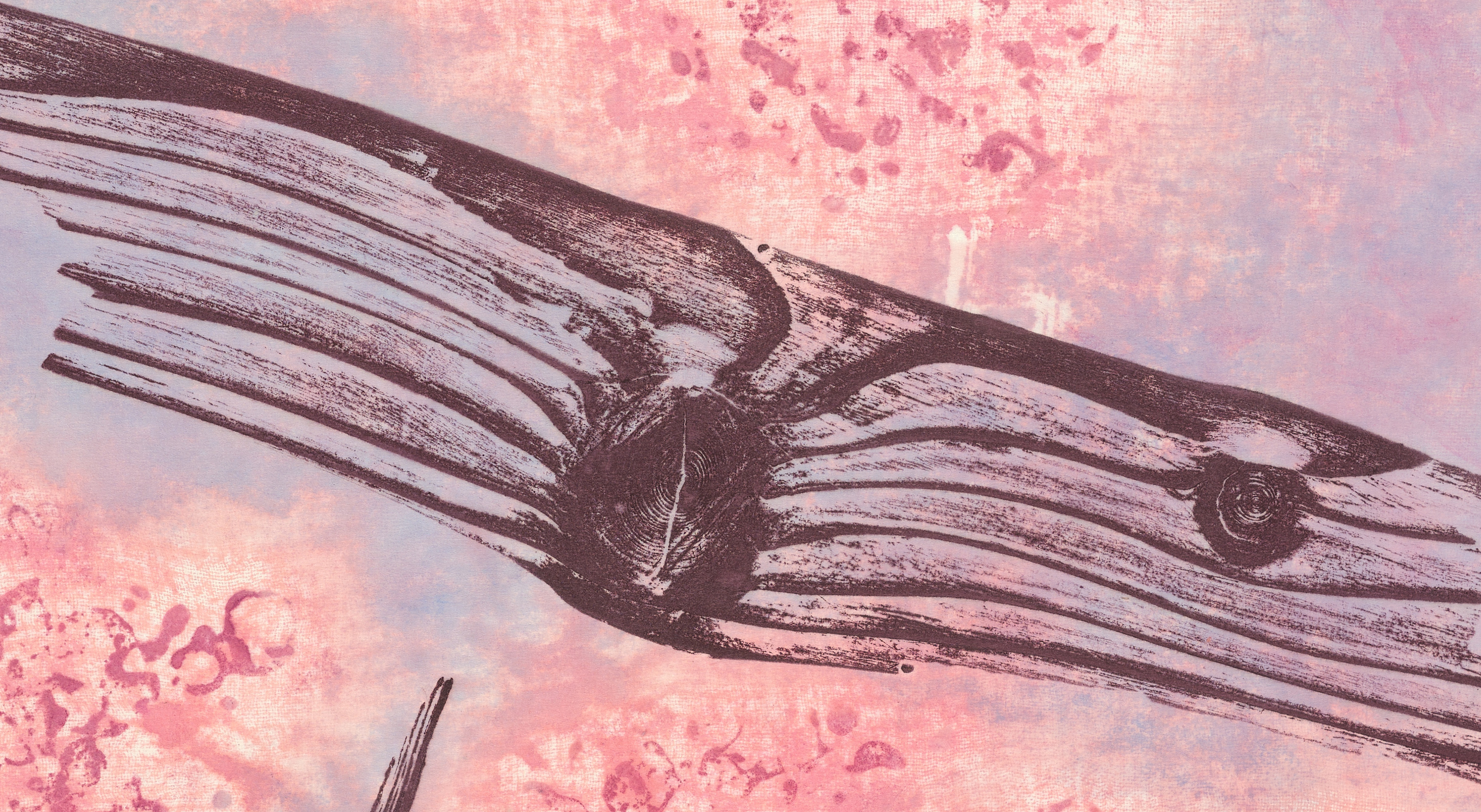
Shinagawa used a technique known as mokume-zuri to print the woodgrain patterns seen here. He printed directly from pieces of wood that had been soaked in water. This causes the wood to swell and can emphasize the grain. Sometimes, artists will weather the woodblock or carve away certain sections to create the same effect. Shinagawa likely carved the edges of these pieces of wood, creating unnatural shapes and angles.
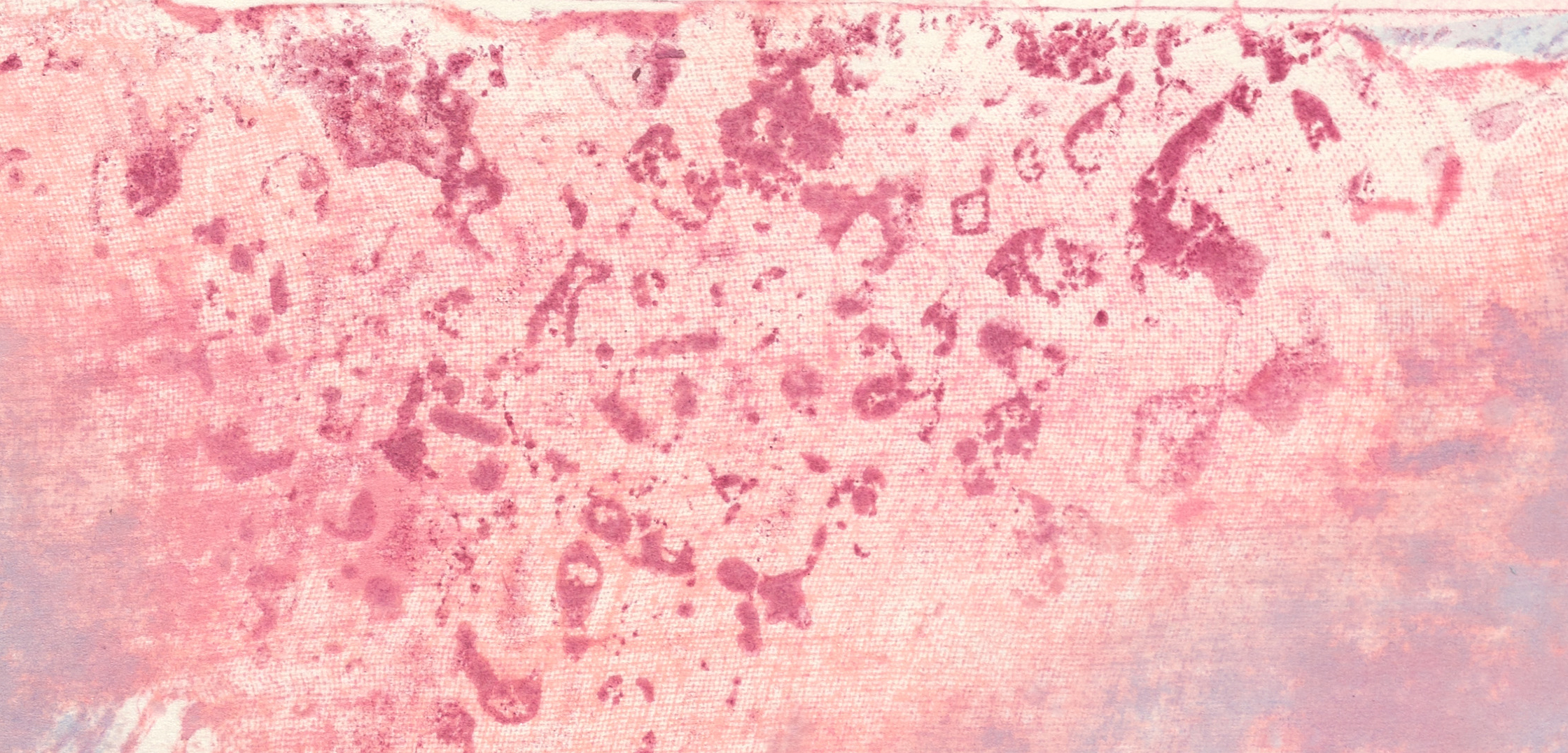
Shinagawa was interested in the printing effects he could create by making blocks from different materials other than wood, like paper and plastic. Textured paper or paper of varying thickness could have produced the mottled effect seen here. Using such papers causes pressure to be unevenly applied during printing, creating different effects.
Particularly attuned to color, Shinagawa mixed his own pigments. He explained,
When I was beginning to make woodprints, I got hold of a fragment of ukiyo-e. The more I studied it the more I was struck by the depth of color in that print. When I held it up against the light it looked like stained glass. I realized then that a good print is much more than color laid on paper. The paint has to go into the paper, to become part of the paper. Often the pigments should be mixed in the paper by applying one over another to get a living, glowing color deep in the paper.
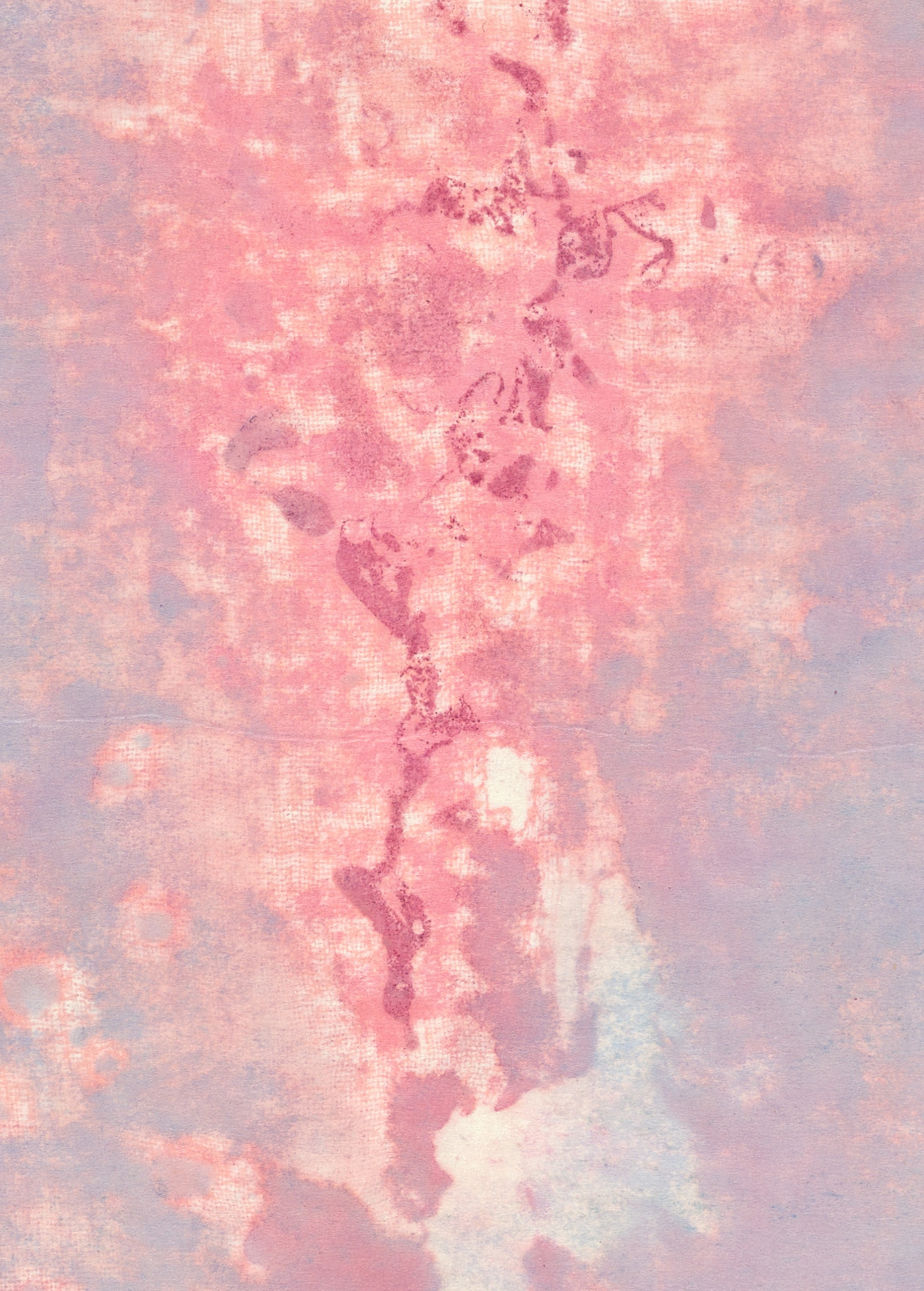
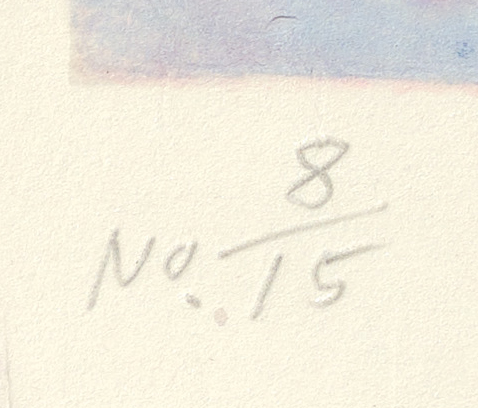
The penciled notation “No. 8/15” indicates this print was the eighth impression from a total edition size of fifteen. However, the impression number does not necessarily reflect the order the prints were made. Impressions can vary considerably during the printing process, and knowing the impression number is helpful in distinguishing between prints and seeing how a composition might have evolved during printing. Shinagawa usually limited his editions to twenty and was only able to print a few impressions at a time. Paper blocks, which he used to make this print, swell from the pigments and need to dry after a few impressions are printed.
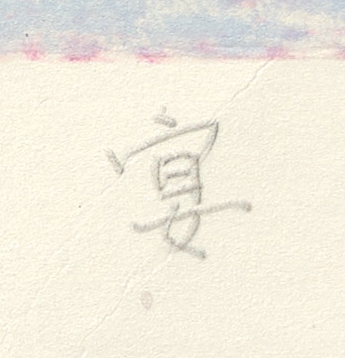
The title of this print is Utage, which means “banquet” or “party.” Abstract art uses color, shape, form, and line to create compositions that are not representative of visual reality. Sometimes, but not always, the title of an abstract work can hint at what the artist intended. Think about why Shinagawa chose this title and how it changes your ideas about the different elements of this composition. For some viewers, the pieces of wood might resemble the placement of speakers at a table, or the movement of conversation between them.
